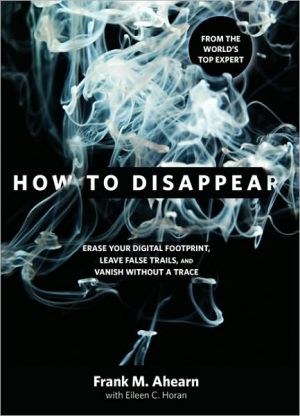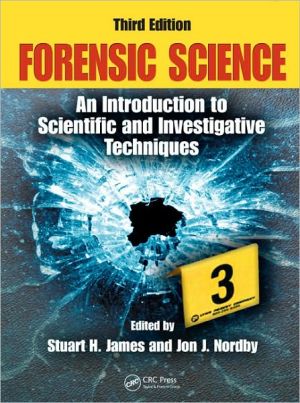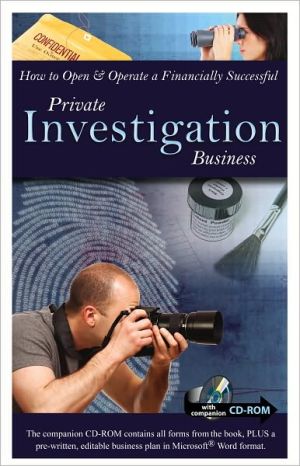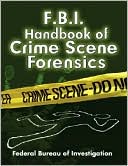Be Your Own Detective
This updated and expanded edition of Be Your Own Detective includes the new technological advances in the art of snooping. High-tech devices developed for the most part by the military—night vision goggles, bugging and tapping equipment, sound amplification dishes are all now available (at reasonable to staggering prices) at the neighborhood electronics shop. The worldwide web is an amazing one-stop source of information. Authors Fallis and Greenberg have compiled the host of opportunities...
Search in google:
This updated and expanded edition of Be Your Own Detective includes the new technological advances in the art of snooping. High-tech devices developed for the most part by the military--night vision goggles, bugging and tapping equipment, sound amplification dishes are all now available (at reasonable to staggering prices) at the neighborhood electronics shop. The worldwide web is an amazing one-stop source of information. Authors Fallis and Greenberg have compiled the host of opportunities offered by the web and point out how they may be accessed most efficiently and effectively. Publishers Weekly Readers who are untroubled by fastidious concern for ethics but plagued with curiosity will take careful notes as Fallis, a licensed P.I., and Greenberg, a criminal defense lawyer, team up to coach the novice on the art of sleuthing. Practical tips on such venerable skills as tailing (use reflective surfaces, they suggest; look at shop windows, plexiglass bus shelters or even puddles rather than directly at the subject) and surveillance (put a cheap watch under a tire on a subject's car; if he drives off, the watch's broken face will reveal the time of departure) stand out from sections that appear mere padding (on the detective's ``sense of self,'' for example), from the authors' intrusively articulated mutual admiration, and from the numerous instances where the duo outlines formula lies designed to expedite information-gathering from civil servants. A lot of their advice is just common sense; much of the writing coyly hardboiled--but would-be Columbos will not mind in the least. (Jan.)
\ Publishers Weekly - Publisher's Weekly\ Readers who are untroubled by fastidious concern for ethics but plagued with curiosity will take careful notes as Fallis, a licensed P.I., and Greenberg, a criminal defense lawyer, team up to coach the novice on the art of sleuthing. Practical tips on such venerable skills as tailing (use reflective surfaces, they suggest; look at shop windows, plexiglass bus shelters or even puddles rather than directly at the subject) and surveillance (put a cheap watch under a tire on a subject's car; if he drives off, the watch's broken face will reveal the time of departure) stand out from sections that appear mere padding (on the detective's ``sense of self,'' for example), from the authors' intrusively articulated mutual admiration, and from the numerous instances where the duo outlines formula lies designed to expedite information-gathering from civil servants. A lot of their advice is just common sense; much of the writing coyly hardboiled--but would-be Columbos will not mind in the least. (Jan.)\ \ \ \ \ Library JournalLong-time private eye Fallis and criminal lawyer Greenberg promise here ``to teach you to do all the things detectives do.'' They discuss how to do surveillance; how to follow the paper trail of public and private records (even sifting through trash); how to trace missing persons; do interviews; and examine evidence. This instruction, plus numerous anecdotes, provides an entertaining, informative, and interesting look at a little-known occupation. However, as a self-teaching manual for amateurs, this book is only partly successful. In some cases not enough detail is provided, and while the authors do distinguish legal from illegal detective methods, at times they fail to rule out the impractical and unsafe. Several recent books on detective work are available; Ted Gunderson and Roger McGovern's How To Locate Anyone Anywhere Without Leaving Home ( LJ 8/89), for example, thoroughly covers one topic, missing persons. Fallis and Greenberg take on the whole subject of detective methods but with uneven results. Recommended, but with reservations.-- Mary Jane Brustman, SUNY at Albany Libs.\ \








